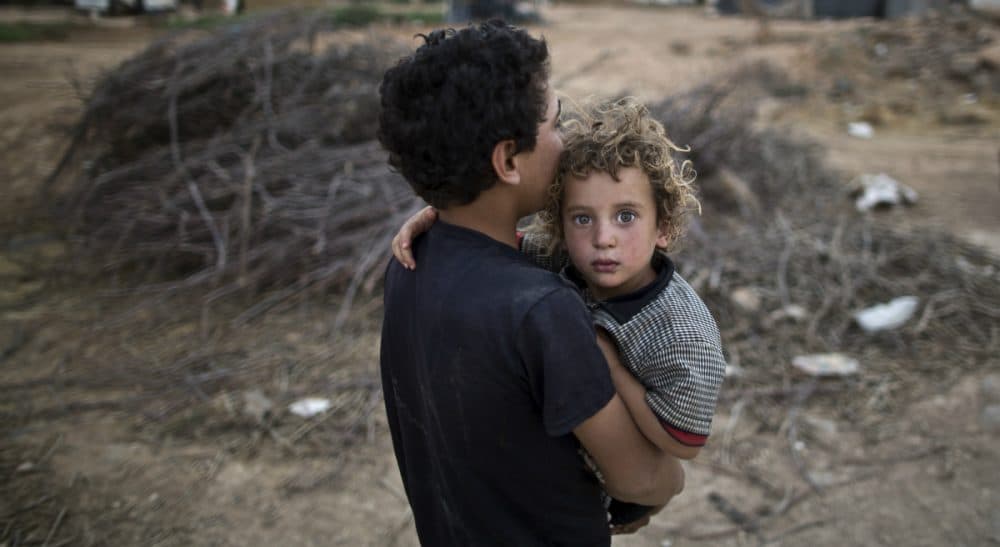Advertisement
Can We Measure The Human Cost Of War?

One effect of the wars the United States has waged in the Middle East is the venomous residue that festers in locus belli. Its most striking features are the high numbers of civilian casualties and the ruins left behind. This “collateral damage,” as the military likes to call it, stems from warfare that no longer has clearly identifiable armies and front lines. The results, however, are devastated societies that often are breeding grounds for more violent conflict.
...'collateral damage,' as the military likes to call it, stems from warfare that no longer has clearly identifiable armies and front lines.
Afghanistan and Iraq are the most obvious examples. Twenty years of war and sanctions in Iraq, which resulted in more than one million Iraqi deaths, have produced the Islamic State and its vicious extremism. The war in Afghanistan was meant to be a hunt for Osama bin Laden and has turned into America’s longest war; even now we are enmeshed in events as horrifying as the bombing of a hospital in Kunduz.
The civil war in Syria, the Saudi bombing of Yemen, the everlasting conflict in Gaza—these, among others, illustrate the same point: Violence begets violence.
How can this tragic cycle be broken? For wars in which the United States has been directly involved — “boots on the ground” — we should enact a way to explore precisely how warfare has affected local populations. Such “conflict impact assessments,” conducted by a federal agency, would provide Americans with a precise picture of the consequences of waging war.
No such effort is made nowadays, and we are left to wonder how many people died, what the economic and social costs were to these places, and how the chances of physical and political recovery are affected. That is, if we wonder at all: indifference seems to be the rote response to U.S. wars in the last 60 years. And using that indifference, or suppressed memory, politicians from across the political spectrum can claim victories and rally the public for the next intervention.
A conflict impact assessment might dampen some of that contrived enthusiasm for war. We use impact statements for the environment, racial profiling and other disruptions. A conflict impact assessment would measure the provision of health care, clean water and sanitation, housing availability, forced migration, and such social and political gauges as the status of women and minorities, political extremism and official corruption, and then estimate how war has affected each of these gauges.
Most important, it would calculate how many people died in the war. Mortality is a prime example of why conflict assessments are warranted. It’s difficult to grasp the scale of violence and its consequences without measuring mortality, and the only reliable way to do so is with randomized household surveys. Notably, this key task is emblematic of the entire conflict assessment enterprise. Mortality has large implications. It correlates to displacement and the possibility of return, the loss of skilled labor, the prevalence of widows and their impoverishment. Where there was persistent violence, one likely finds empty schoolrooms, dysfunctional hospitals, poor sanitation and clean water supply, and corrupted local governance—all of which are ingredients for alienation, extremism and more violence.
What does such an assessment usefully tell us? At a minimum, we learn what society’s recovery needs are. We learn more about how effective or excessive military operations were. But most important is to draw a picture for the American (and world) public of the blows to society—its people, institutions, physical infrastructure, dwellings, schools, resources, social capital, and so on. Remarkably, for all the wars and all the instant media we have, little appreciation for war’s human costs is evident.
If we have little idea of how war rocks these faraway places, it’s easy to endorse the next U.S. intervention.
This vast lacuna of knowledge and caring is not only a moral embarrassment, but leads to poor choices in the future. If we have little idea of how war rocks these faraway places, it’s easy to endorse the next U.S. intervention. A conflict impact assessment forces us to confront, in detail, what has happened in the war zone. If Afghanistan, Iraq, Vietnam and Korea are indicative, it will be a gruesome picture.
However one realizes an assessment, its importance should not be diminished: war is pernicious and momentous. And its consequences — at home and abroad — do not end with the cease fire. These American wars contain an element of Greek tragedy, beginning with hubris and ending with an unconscious, Oedipal urge to blind ourselves to the horror of what we’ve done. Our historical blindness is indeed self imposed, but remedies of a kind are attainable -- forging new ways to see again, perhaps to ward off future perils.
